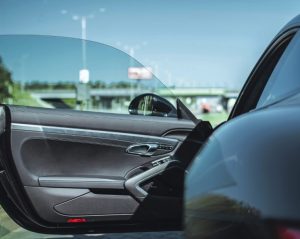The scrap car industry has existed for almost as long as the car industry in general. However, it has had to evolve massively, especially in recent years. There have been some big changes, including higher demands for recycling parts. The goal is to prevent damage to the environment, saving resources and ensuring harmful materials don’t get released. We want to have a closer look at the process for dealing with scrapped cars here. Then, if you need sustainable foils for different applications, including car parts, you can talk to us.
End of life
 Every car will eventually reach the end of its life. While modern cars last much longer than they did in the 70s and 80s, the average lifespan is still 11-14 years (depending on model, usage, upkeep, etc). When it happens, it is important to deal with the vehicles carefully.
Every car will eventually reach the end of its life. While modern cars last much longer than they did in the 70s and 80s, the average lifespan is still 11-14 years (depending on model, usage, upkeep, etc). When it happens, it is important to deal with the vehicles carefully.
Typically, car recycling companies will follow a specific step by step process to deal with end of life vehicles (ELVs). The goal is to save as many resources as possible, reducing the environmental impact of extracting new materials and making different products.
De-pollution
The first major step is really important because vehicles contain a number of harmful fluids. It is vital to remove them to prevent issues like fires, contamination, or injury to technicians. So, every vehicle will be carefully drained of fuel, oil, brake fluid, and much more. Interestingly, most of these fluids will go off for processing to reuse or dispose of them properly.
Salvaging parts
The next phase is to remove as many parts as possible to save them for reuse. There is always high demand, whether it is common models or rarer, older vehicles. In fact, parts can actually gain a huge amount of value when it is popular classic cars. The interesting thing is skilful vehicle recycling companies can return various things to roadworthy condition. Sometimes all it takes is a careful clean. Sustainable foils can help too, especially with things like trim and bodywork.
Part disposal
Sadly, some parts on ELVs can’t be reused. Common things that fall into this category include tyres and batteries. It isn’t acceptable to simply throw them into landfill though. Instead, companies need to dispose of them properly, ensuring minimal impact on the environment. Luckily, recycling has improved for many different products, including batteries.
Compaction, shredding, and separation/sorting
The next phase is one a lot of people will be familiar with; crushing the other parts of the vehicle to create a tiny, compact block of material. It can then go for further processing. This involves shredding to break materials into small, manageable pieces. They can then be separated and sorted into different streams, including specific types of metal.
Final stage
All you need to do now is finish recycling the individual materials. This includes glass and different types of metals. Typically, the processing here will involve melting the waste materials. They can then be recast into new products.
Talk to us about sustainable foils
It is really interesting to see how many different parts go into a single vehicle. A typical car will contain 30,000-40,000 of them. As a result, it is no surprise that recycling ELVs is such a complex process. It is really rewarding though, especially in an environmental sense.
If you’re thinking about car parts, it is a good idea to look at how to make them reusable. Sustainable foils are a really interesting idea. They look like real metal but for a fraction of the price and with a tiny carbon footprint. So, they work well for lots of applications, including interior trim. Plus, they are fully recyclable and won’t prevent you from recycling the substrate you apply them to.
You can talk to us if you want to learn more about high quality foils and foiling services; we’re one of the leading experts in the UK.
